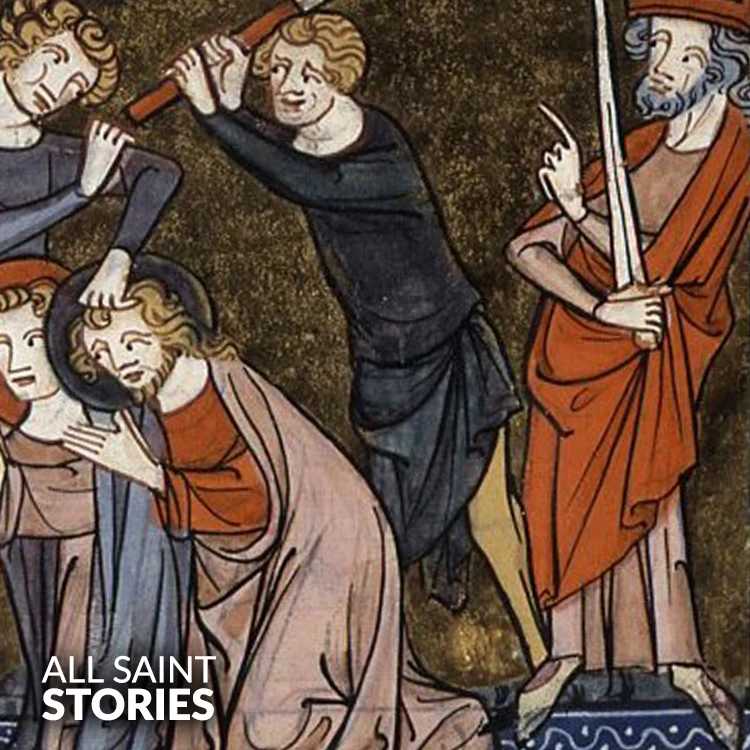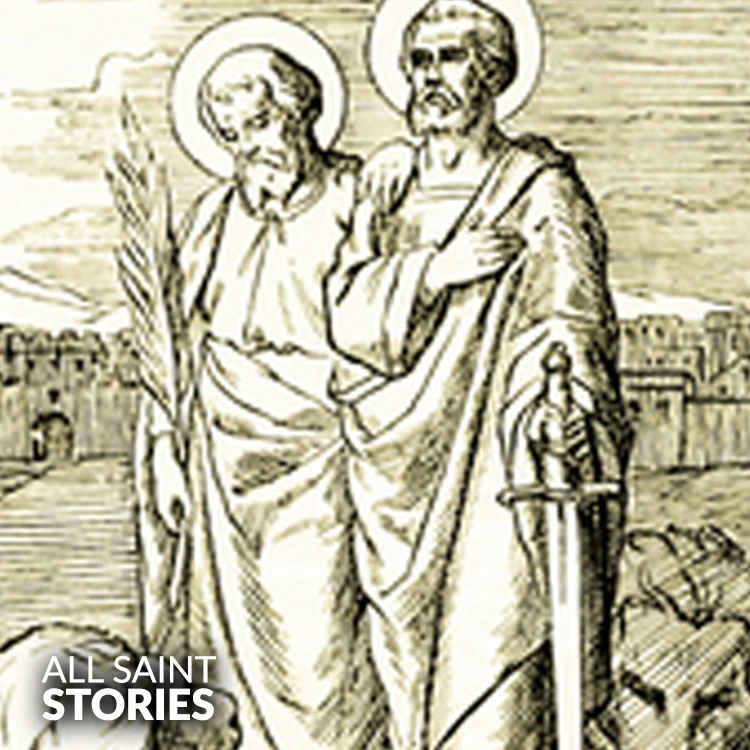O glorious martyrs, Saints Felicianus and Primus, who gave your lives rather than deny your faith, pray for us that we too may remain steadfast in our beliefs and be granted the courage to face trials for the love of Christ. Amen.
ST. FELICIANUS AND PRIMUS
ST. FELICIANUS AND PRIMUS

Saints Felicianus and Primus were early Christian martyrs, believed to be brothers who were executed for their faith during the Roman persecutions around 303 AD. They are honored on June 9 and venerated for their unwavering commitment to Christ even unto death.
Saints Felicianus and Primus are among the numerous Christian martyrs who bore witness to their faith during the intense persecutions of the Roman Empire, particularly under the rule of Emperor Diocletian in the early fourth century. Although historical records are sparse, early martyrologies and Christian tradition uphold their legacy as brothers who courageously refused to renounce Christianity despite severe threats and likely torture.
The persecution of Christians reached a peak in 303 AD when Diocletian issued edicts that ordered the destruction of churches, the burning of sacred texts, and the imprisonment and execution of Christians who refused to offer sacrifices to Roman gods. It was during this era that Felicianus and Primus, unwavering in their devotion, were arrested. While the specific charges, tortures, and exact method of execution are not clearly documented, the pattern of Roman persecution suggests they endured brutal trials. Like many martyrs of their time, their faithfulness unto death solidified their place in the hearts of early Christians and ensured their commemoration by future generations.
Their story, preserved in the Roman Martyrology, associates them with the city of Rome or nearby regions, which was a center of both imperial power and early Christian resistance. Early Christians viewed martyrdom as the ultimate testimony of faith. Therefore, even when details of their lives were lost to time, their sacrifice was recorded and revered. Their feast day, June 9, became an occasion for Christians to remember not only these two saints but also the countless others who suffered for their beliefs during times of persecution.
Churches and altars have been dedicated to Felicianus and Primus, especially in Italy, where local traditions and devotional practices keep their memory alive. Their veneration spread through oral tradition, early calendars of saints, and martyrologies, which were important tools for preserving Christian memory before widespread literacy and printing. Even today, their legacy remains relevant, reminding the faithful of the cost of discipleship and the power of steadfast belief.
As pre-congregation saints, Felicianus and Primus were recognized as saints by the early Christian community before the formal canonization process was established. Their martyrdom itself was seen as sufficient testimony to their holiness, and their names were inscribed in early Christian calendars and martyrologies. Though their relics and burial sites are not definitively located, it is likely they were interred in one of the many catacombs or Christian burial grounds in or around Rome, where fellow believers honored them with prayers and gatherings.
In iconography, Saints Felicianus and Primus are often depicted together, sometimes holding the palm of martyrdom, symbolizing their victory over death through faith. Devotions to them often ask for courage in the face of persecution, strength to defend the faith, and grace to endure suffering with hope and love.
Video Not Found
The information on this website is compiled from various trusted sources. While we aim for accuracy, some details may be incomplete or contain discrepancies.
If you notice any errors or have additional information about this saint, please use the form on the left to share your suggestions. Your input helps us improve and maintain reliable content for everyone.
All submissions are reviewed carefully, and your personal details will remain confidential. Thank you for contributing to the accuracy and value of this resource.
Credits & Acknowledgments
- Anudina Visudhar (Malayalam) – Life of Saints for Everyday
by Msgr. Thomas Moothedan, M.A., D.D. - Saint Companions for Each Day
by A. J. M. Mausolfe & J. K. Mausolfe - US Catholic (Faith in Real Life) – Informational articles
- Wikipedia – General reference content and images
- Anastpaul.com – Saint images and reflections
- Pravachaka Sabdam (Malayalam) – Saint-related content and insights
We sincerely thank these authors and platforms for their valuable contributions. If we have unintentionally missed any attribution, please notify us, and we will make the correction promptly.
If you have any suggestion about ST. FELICIANUS AND PRIMUS
Your suggestion will help improve the information about this saint. Your details will not be disclosed anywhere.
© 2025 Copyright @ www.allsaintstories.com


 English
English
 Italian
Italian
 French
French
 Spanish
Spanish
 Malayalam
Malayalam
 Russian
Russian
 Korean
Korean
 Sinhala
Sinhala
 Japanese
Japanese
 Arabic
Arabic
 Portuguese
Portuguese
 Bantu
Bantu
 Greek
Greek
 German
German
 Dutch
Dutch
 Filipino
Filipino